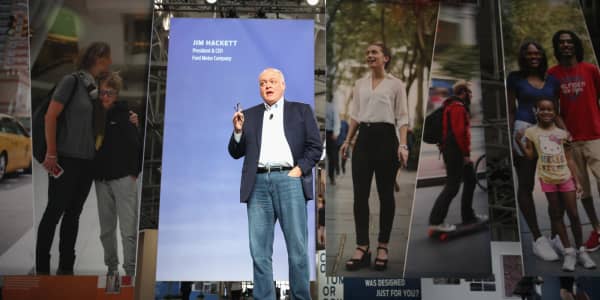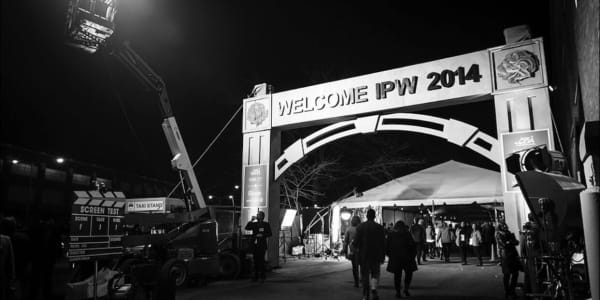The Tesla Model 3 means many things to many people: an affordable electric car; an overpriced and overhyped tech product; a somewhat ergonomically awkward people mover; the beginning of the self-driving future; a key link in a sustainable-energy model that extends far beyond cars.
There's another thing that Elon Musk's electric-car company represents to experts who study innovative businesses and breakthrough technology: an approach to manufacturing, called an S-curve.
Last week during a glitzy launch event, Musk unveiled a warning alongside the first 30 production cars of the new Model 3. "The major challenge for us over the six to nine months is how do we build a huge number of cars," the Tesla founder and CEO said.
His next words quickly became famous: "Frankly, we're going to be in production hell."
But the S-curve that underpins the Model S production ramp isn't known to most people. Last week Tesla tweeted a visual explanation:
@TeslaMotors: Model 3 production ramp S-Curve
An S-curve like the one Musk has invoked compares what a company gets against the amount of effort or money spent to achieve it. Melissa Schilling, professor of management and organizations at NYU's Stern School of Business, said the curve starts low and slow because "at first you don't know what the hell you're doing." Companies experiment with designs, manufacturing methods, cope with failures and learn what works and what doesn't. "You're pumping a lot of money in, and you're getting very little return," Schilling said.
As processes and technologies improve and become standardized, performance improves relative to every dollar spent. This is where the dramatic breakthroughs happen — cellphones became incredibly light and small once batteries shrank in size and increased in power.

The S-curve has major implications for Tesla's plans to make electric cars a mass consumer phenomenon. In the letter released with its earnings on Wednesday, results that pushed shares of Tesla higher, Musk wrote:
"Model 3 drive units as well as battery packs made with our proprietary 2170 form factor cells are being built on new lines at Gigafactory 1. We are now fine-tuning these manufacturing lines to significantly increase the production rate. We wish we could do all of this faster and get everyone's Model 3 to them right away. It's important to understand that our production ramp will follow an S-Curve, meaning that it will begin slowly, grow exponentially, then start to tail off once we achieve full production."
Musk said on the Wednesday earnings call that there should be "zero" concern about Tesla reaching its Model 3 production target.
More from iCONIC:
The crucial decision Elon Musk made when he was flat broke
5 things Elon Musk needs to do now to help Tesla grow up
The guy who makes millions selling fruit to Elon Musk's workers
The end of the road for the S-curve
The S-curve starts to level off when the technology reaches maturity: "As you start getting to the top, you've picked all the low-hanging fruit," Schilling said. "Now [you] need to spend a lot more to get further."
It's even possible to perpetuate the curve: Companies that reach maturity and see innovations slow relative to investments can instead plow that money into introducing a brand-new technology or product, creating a new S-curve to follow.
There's a catch, however: S-curve-wise, the new product will always perform worse than the incumbent product at its peak. Comparing electrically powered vehicles with the internal combustion engine provides a good example: "It's a lot harder to make an internal combustion engine a lot cheaper or more efficient, or a lot safer," Schilling said, adding, "We've been at the top for a long time."
Steel recycling mini-mills pioneered by the Japanese in the 1980s, for instance, underperformed compared to traditional integrated mills ... until it started moving up the S-curve, outstripping traditional mills in making better steel faster and cheaper. "The notion is that when you introduce a new generation of technology, it often is performing poorly to where the previous generation is," Schilling said.
But for those involved in daily business, the perfect timing is not immediately obvious. "It's just fundamentally impossible to predict the exponential part of the manufacturing S-curve," Musk said during Wednesday's earnings call. "S-curve is a simplification because it's really running through a series of constraints. ... It's like a really jagged sort of upward growth."
The trick is to keep pumping money into a model until it can dramatically improve the process and technology — and create a new model line once a previous one reaches its peak.
Musk himself outlined this point in a 2006 blog post called "The Secret Tesla Motors Master Plan (just between you and me)":
"Build sports car
Use that money to build an affordable car
Use that money to build an even more affordable car
While doing above, also provide zero emission electric power generation options
Don't tell anyone."





